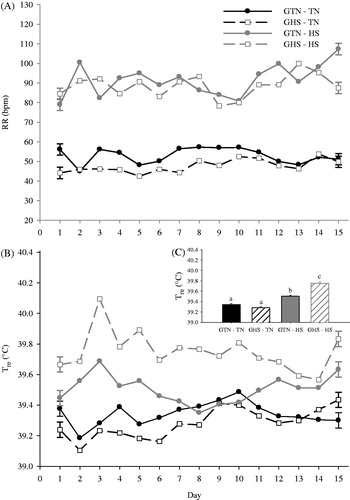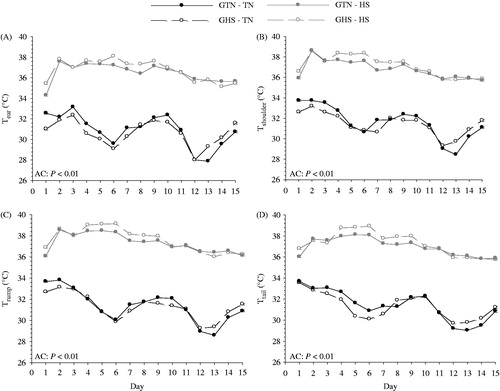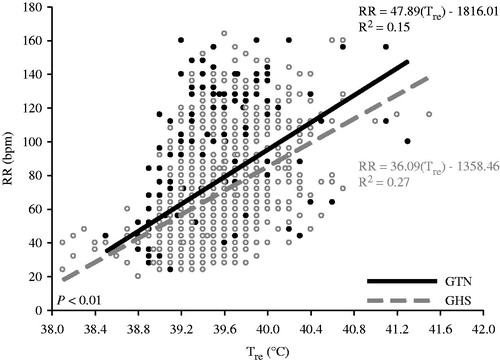Figures & data
Figure 1. Effects of gestational and adolescent thermal environments on the temporal changes in (A) respiration rate (RR), (B) rectal temperature (Tre), and (C) Tre averaged by gestational and adolescent environment in growing pigs. Gestational heat stress (GHS), gestational thermal neutral (GTN), adolescent thermal neutral conditions (TN), adolescent heat stress conditions (HS). Error bars on day 1 and day 15 of the line indicate ±1 SEM. Different letters (a,b,c) above vertical bars in 1C indicate significant differences (p < 0.05).

Table I. Effects of gestational and adolescent thermal environments on body temperature indices in growing pigs.
Figure 2. Effects of gestational and adolescent thermal environments on the temporal changes in (A) ear skin temperature (Tear), (B) shoulder skin temperature (Tshoulder), (C) rump skin temperature (Trump), and (D) tail skin temperature (Ttail) in growing pigs. Gestational heat stress (GHS), gestational thermal neutral (GTN), adolescent thermal neutral conditions (TN), adolescent heat stress conditions (HS), adolescent conditions (AC). Error bars on day 1 and day 15 of the line indicate ±1 SEM. p Values in each figure represent Tskin differences comparing adolescent TN and HS exposed animals regardless of gestational treatment.

Figure 3. Linear regression (y = mx + b) of respiration rate (RR) as a function of rectal temperature (Tre) for gestational thermal neutral (GTN) and gestational heat stress (GHS) exposed pigs, regardless of adolescent environment. Coefficient of determination (R2), and slope (m) is presented for each regression line.

Table II. Effects of gestational and adolescent thermal environments on production parameters in growing pigs.
